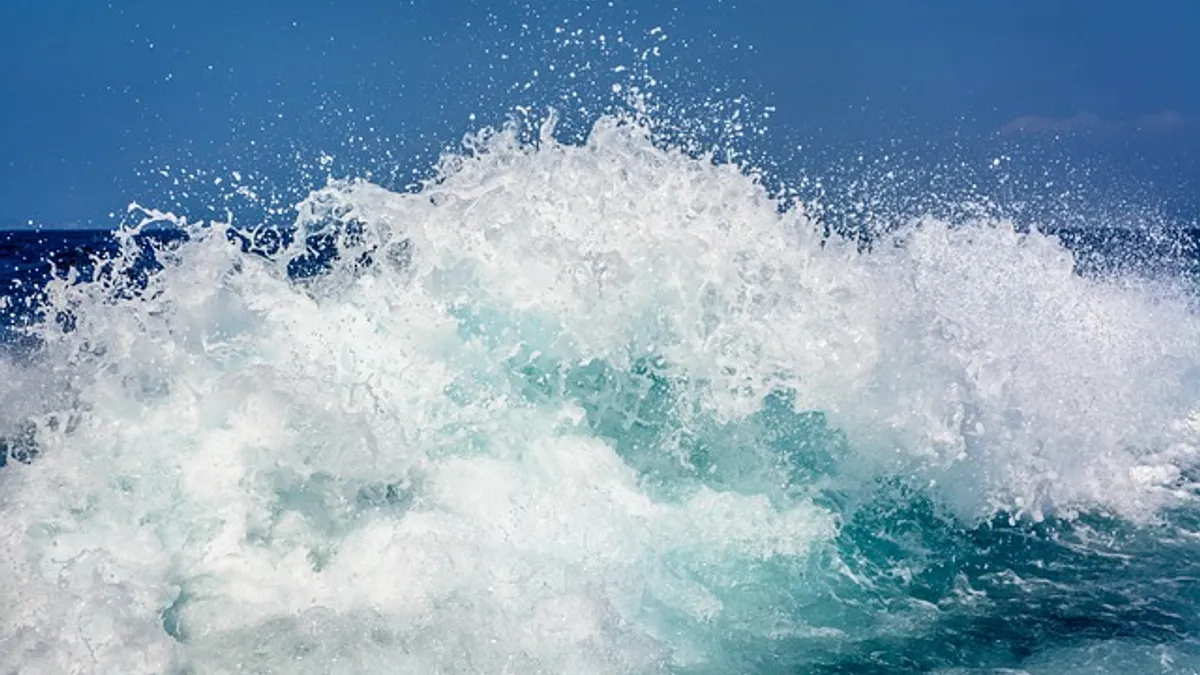Dive Brief:
-
The first wave-produced electricity in the U.S. has entered the grid on Oahu, Hawaii, with power coming from a U.S. Navy test site about one mile off the shore of Kaneohe Bay.
-
The test site uses two buoys — the Azura, which can produce up to 10 kW, and the Lifesaver, capable of producing 4 kW on average.
-
The Department of Energy currently has $40 million available for a wave test facilities and recently rebooted wave energy research, but past governmental efforts to spur the sector have not resulted in any commercial projects.
Dive Insight:
Anyone who has been to the beach has wondered why the energy of waves and tides cannot be harnessed and turned into clean energy. It is not for lack of trying. There have been several efforts, but limited success. The main barrier is the ocean itself, which is a harsh environment for any kind of equipment.
One of the first offshore wave projects, launched off the Scottish coast in 1995, met an untimely demise shortly after being deployed.
Between 2008 and 2015, the Department of Energy awarded $136 million to 92 marine hydrokinetic projects, but does not have any commercial installations to show for it.
But the promise of the ocean continues to draw interest, and funding. In May the DOE rebooted its hydrokinetic research efforts.
The DOE now says it has $40 million in funding available for an open water, wave energy test facility.
The latest efforts come from the Navy, which is working toward making its fleet and operations more resilient and sustainable.
"More power from more places translates to a more agile, more flexible, more capable force," Joseph Bryan, deputy assistant secretary of the Navy, told the Associated Press during an event at the Hawaii test site. "So we're always looking for new ways to power the mission."
One of the buoys in the Navy’s test site, the Azura, stands 12 feet above the water and extends 50 feet below. It converts both the vertical and horizontal movements of waves into electricity. The company, working with the Navy and Northwest Energy Innovations, plans a version that can generate at up to 500 kW.
The other buoy, the Lifesaver, a doughnut-shaped device 50 feet in diameter and standing three feet above the water, was developed by a Norwegian company. The device is anchored to the ocean floor with cables that turn a generator when they move.
Last year in Australia, the Navy has switched on the country’s first wave energy device. It hit a peak capacity of 240 kW in tests.













